Planet Impact
A work-in-progress game of 5+ years, built from the ground up in Unity.

Key Features
- Mobile same-device multiplayer
- Realtime 2D shadows
- Gravitational physics simulation
- Music and sound effects
Description
This project arose quite on accident...
After playing Thomas Was Alone as a kid, I became rather fascinated with its simulation of 2D shadows, and desperately wanted to re-create the effect in a project of my own one day. During my junior year of high school I finally got my hands on the Unity game engine and had a chance to do just that; however, being completely new to Unity, C# and games programming in general, achieving this small task turned out to be a considerable challenge. Nevertheless, I persevered, and found immense satisfaction in the learning process — so much so that after successfully implementing a satisfactory 2D shadow simulation I challenged myself to take the project further.
Before long, I was set on creating a 2-player competitive local multiplayer game for mobile devices in the vein of Pocket Tanks and Drive Ahead; thus, "Planet Impact" was born.
The action of Planet Impact takes place in a small solar system consisting of 6 planets and 1 central star. Each player controls 3 of these planets, one of which they select to be their "base." Players take turns launching asteroids into the solar system in an attempt to destroy their opponent's "base" planet, relying on their understanding of gravitational physics to do so. Numerous powerups, hazards, and other modifiers add to the fun!
All of the art, code, sound effects and music in the game were made by me, from scratch.
Demo

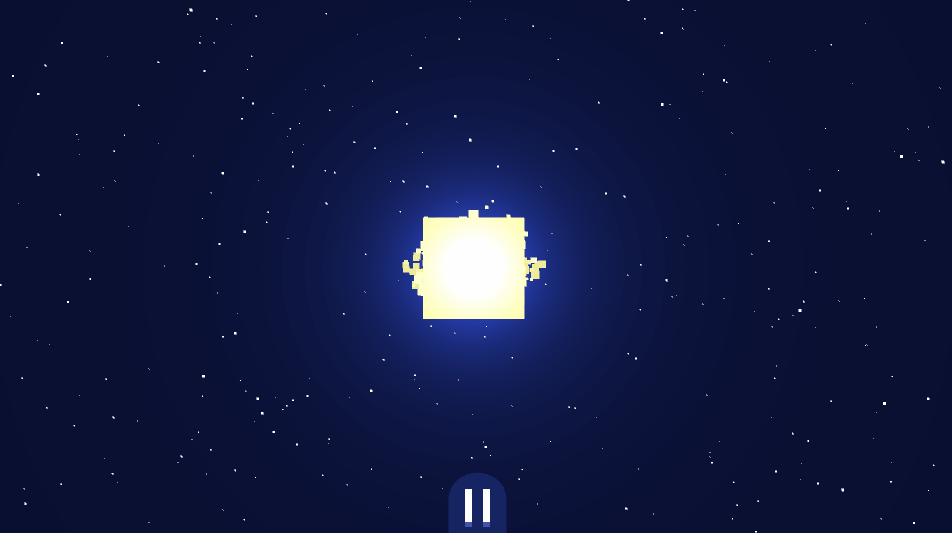
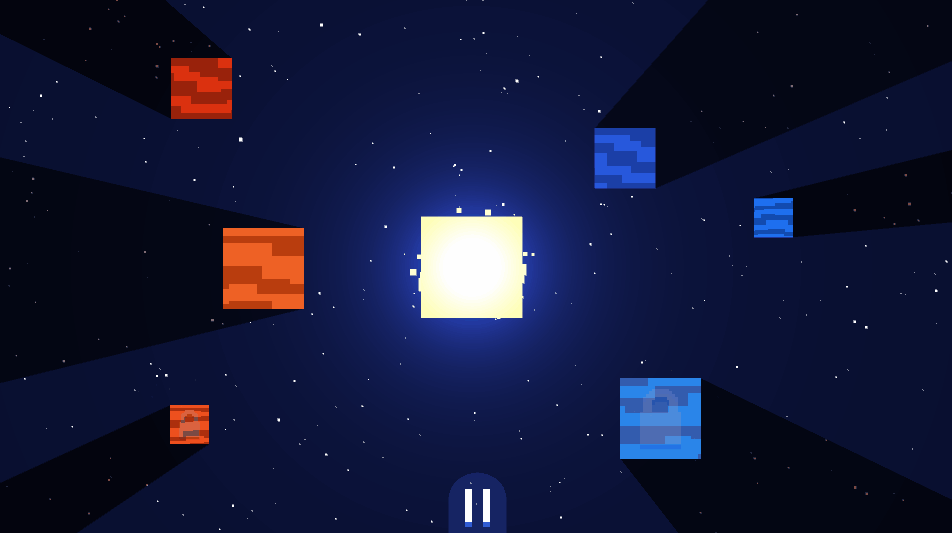
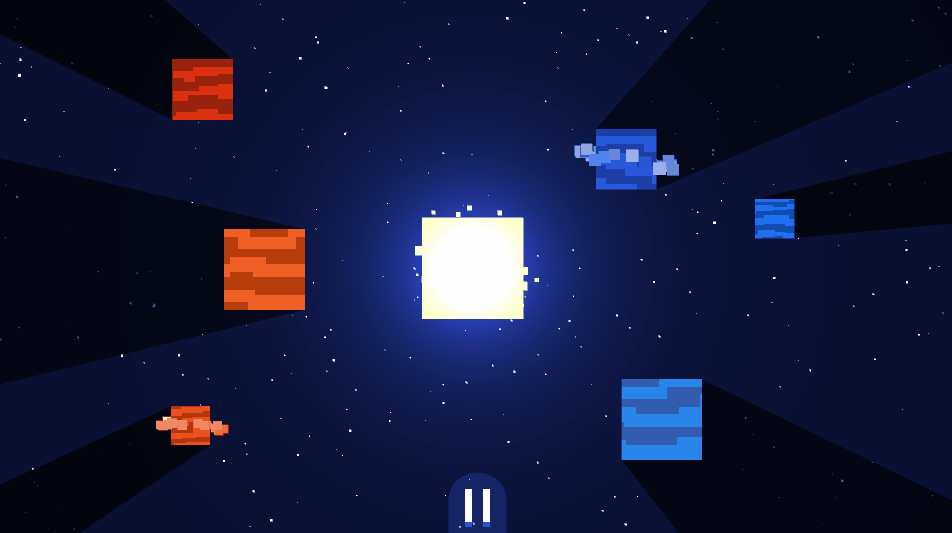
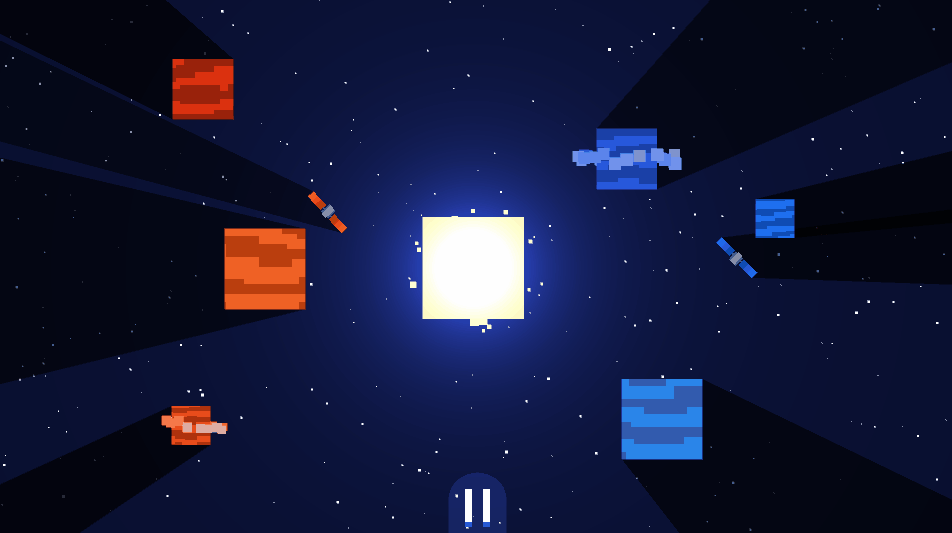
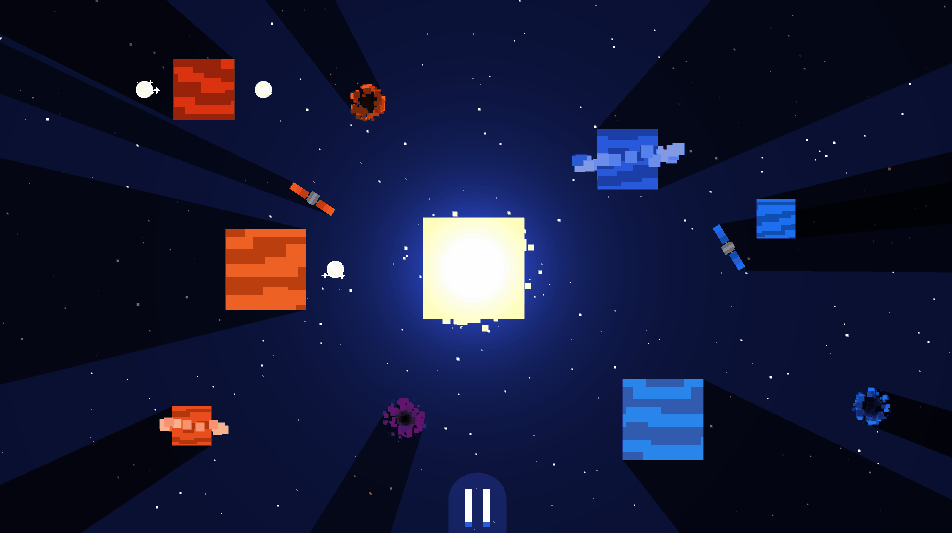
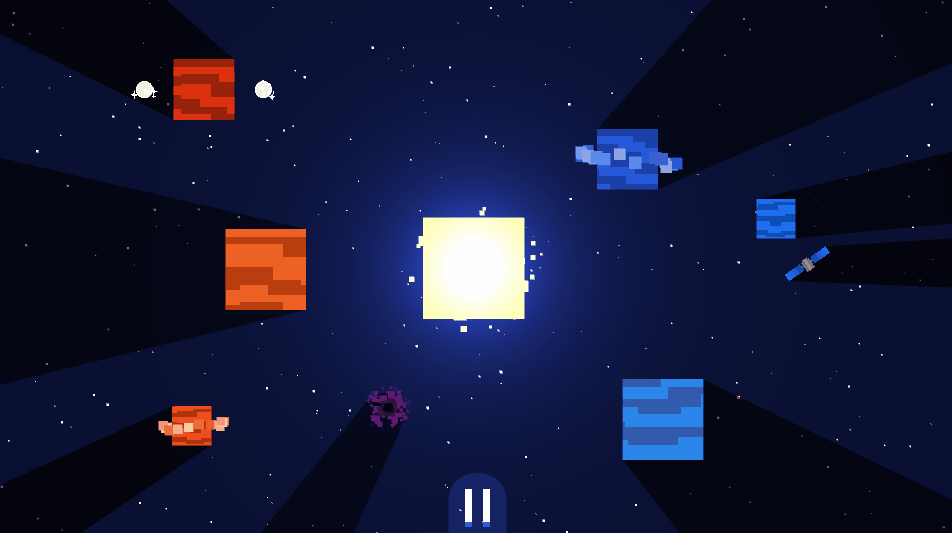
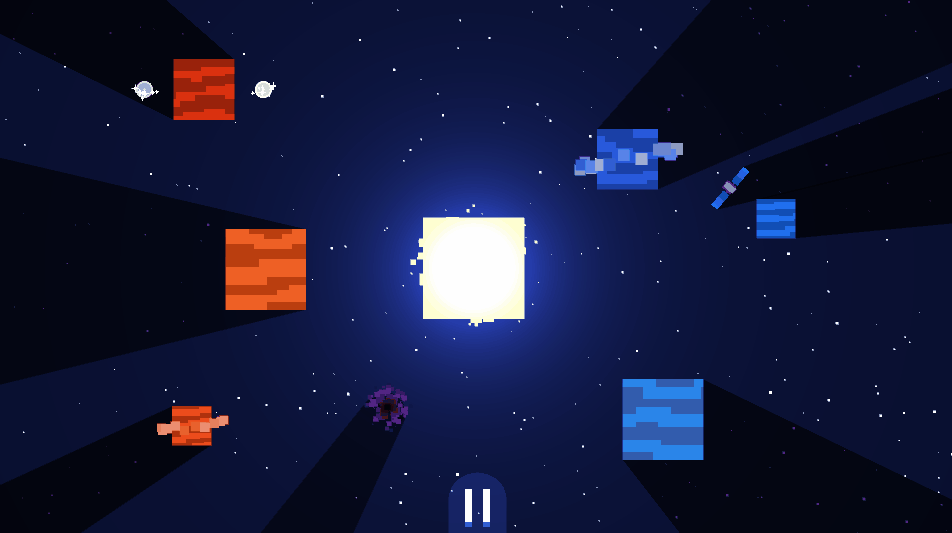
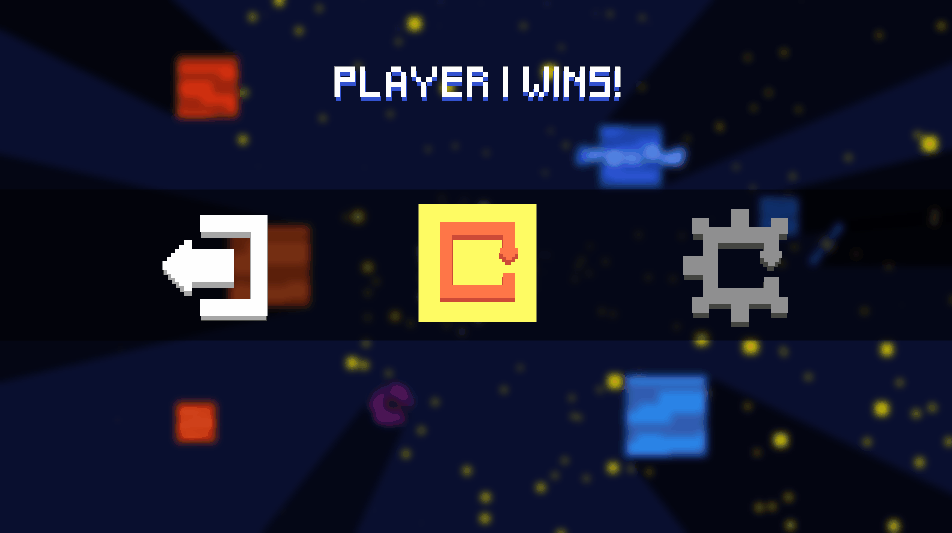
Tools Used
Languages: C#, HLSL
Software: Unity, Aseprite, Bosca Ceoil, Audacity, Git